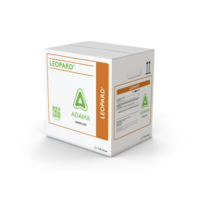
Post-emergent spraying for grassy weeds in bean crops has started, and questions are arising over rate ranges

Weed size is a big driver for product rate. Graminicides target the growing point, which is generally only a small fraction of the total plant, and as the grassy weeds get larger the percentage of meristematic tissue decreases even further. Given that control is only achieved when a lethal dose of a.i. gets into the growing point, larger grasses need higher rates to overcome the dilution that occurs via increased biomass. And it is important to remember that once a seed head forms there really isn’t any longer a growing point to target – at this point the products won’t work.
Differences in susceptibility amongst grasses also exists. Certain weeds (ie. Crabgrass) are more challenging to control than other grasses of similar size, so higher rates will be needed. Perennial grasses (ie. Quack grass), with meristematic tissue in their rhizomes, require the maximum label rates to ensure enough ai gets down to these root based targets.
Tank mix partners can also impact optimal rates. Products which burn (group 6 or 14) can damage the cuticle of the grassy targets, which can impair graminicide uptake. Split applications are the best course of action, but increasing the rate of the graminicide can help maintain efficacy1. Mixes with synthetic auxins (Enlist™ or Xtend® based platforms) can also decrease graminicide efficacy. Again split applications are best, but graminicide rate adjustments can help (please note that 2,4-D and ‘fop’ products have very strong antagonism that even rate adjustments rarely overcome).
For more information on the graminicide products offered by ADAMA, and their associated rate ranges, please visit our website links below, or reach out with any questions here.
Drew Thompson - Technical Sales Agronomist (Eastern Canada)
ARROW ALL IN: ARROW ALL IN® | ADAMA East Canada
LEOPARD: LEOPARD® | ADAMA East Canada
Referenced Literature: 1 Evaluation of quizalofop tank-mixtures for quizalofop-resistant rice - ScienceDirect
Always read and follow label directions.
ARROW ALL IN and LEOPARD are registered trademarks of an ADAMA Group Company. All other products are trademarks of their respective companies.
©️2024 ADAMA Agricultural Solutions Canada Ltd.

